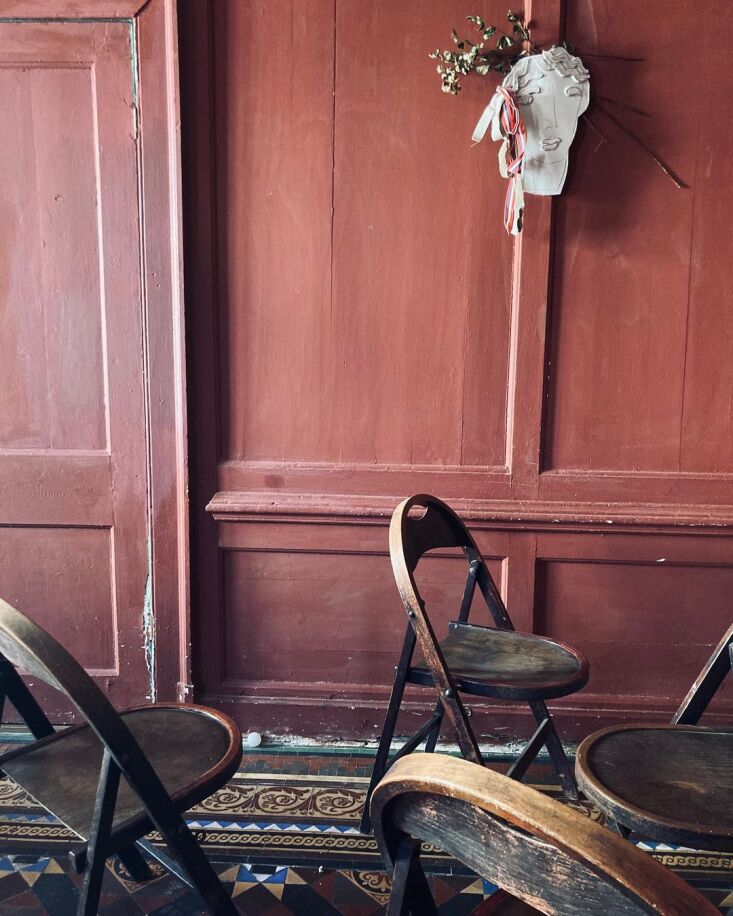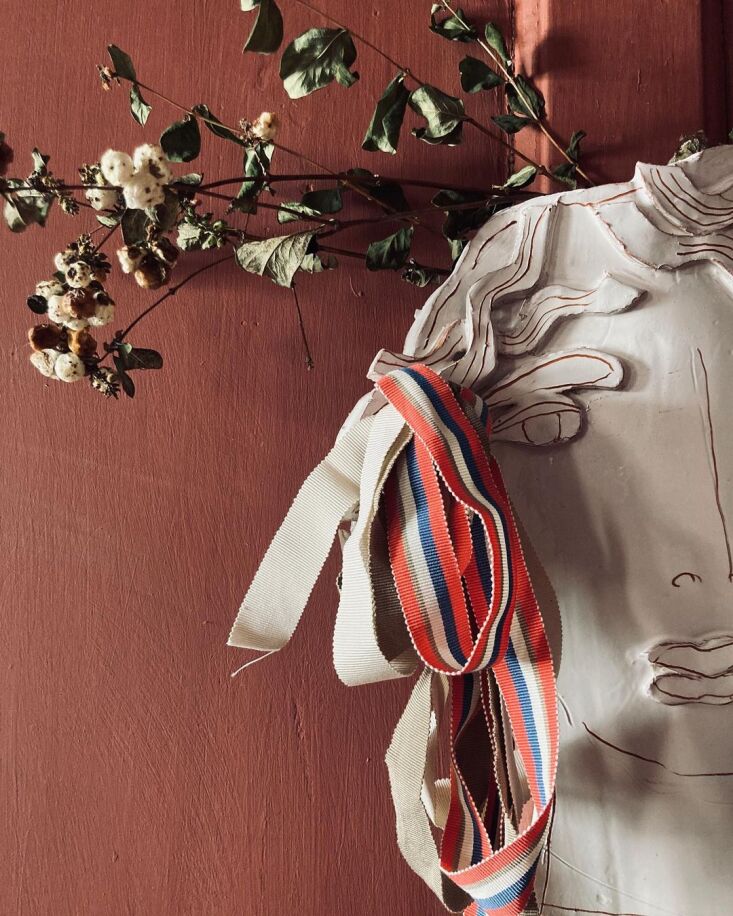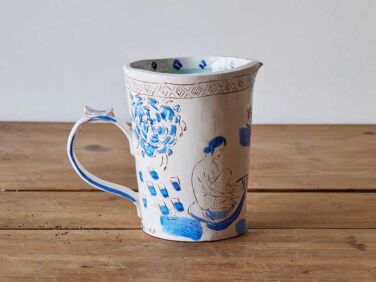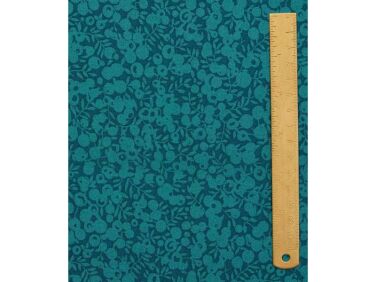Usually, when we feature a home, we ask what design choices have been made, what changes, what upgrades and tweaks.
In the case of this particular house, however, the poetry is much more in what hasn’t been done—what’s been left unchanged.
This is the 16th-century home of ceramicist and shopkeeper Sophie Wilson and four of her children in The Fens, in England, and little has changed within its walls, even before Sophie moved in. “I had been looking for a long time for a renovation project, preferably Georgian, in London without success,” she says. “One day I extended my search criteria by 50 miles and the Manor House popped up. It was a wonderful and terrible discovery at once, because I knew I had to have it, but it seemed a tremendous ambition at that time.”
The house was grand but badly decaying. “It had been neglected for many decades,” Sophie continues. “The previous owner lived in only one room, in squalor. The building had essentially been standing in a pool of water for one hundred years, which had caused serious subsidence and damage.
“The oldest part of the house dates back to 1551. The building is in essence three dwellings which have been pushed and melded together over four centuries. The date 1690 is carved in stone around the house and marks a significant period of investment and repair by a man called Aubrey Hunter who worked for the East India Trading Company. The latest part of the building dates from 1730.”
There have been precious few upgrades over the centuries. Sophie is still in the process of shoring up the structure, the roof badly needs replacing, some of the many rooms are without electricity, and the house can be cold in winter. (“Ultimately we dress appropriately for the temperature,” Sophie writes on Instagram. “We put another jumper on. Simple as that.”) But with an entirely untouched structure come rare things: still-rich coats of paint on the walls—salmon pink, deep green—that appear as they did centuries ago, patterned ceramic tiles from years past, even reeds uncovered within a ceiling, used as insulation and estimated to be more than 300 years old.
Sophie also recently launched a shop within these walls: 1690 Store. As she describes it on the site: It’s “a sort of Diagon Alley-style place where I imagined Molly Weasley would go for her essentials,” featuring her own ceramics as well as soaps, cloth, jams, and more.
A certain unfussy as-is attitude meets painterly, fully saturated rooms and unblemished historic details: Join us for a look inside Sophie’s 1690 house.
Photography by Sophie Wilson (@1690works).

Even with a rebuilt cellar and dried-out timbers, “the structural damage remains a very real problem,” Sophie says, and the roof in particular needs repair. Photograph via 1690 Store.

“My only ambition for this beautiful house is to make it sound for the next 150 years and halt the decay,” she says. “It is so absolutely beautiful, the atmosphere so peaceful and still, I have no intention of interfering with the spirit of the building at all.” She’s hoping to be able to continue the work with support from Historic England.







“When I first visited this house, I had a very real sense of the lives that had gone before me, and I wanted to become part of this building’s history. I wanted to live in it actively, acutely: for the children to scamper about, to hear them squabble, to smell cinders in the fireplaces and lavender from the garden, to hear piano music drifting up the staircases, to know the ghosts. Everything I make is essentially a prop for this stage. I am grateful to live here. And I think the house is grateful to have us.”









See more of Sophie’s whimsical ceramic work via 1690 Store. And for more tender rescues, see:
- If a House Were a Well-Worn Coat: A Design Couple’s Snug, Earthy, Reclaimed House in the UK
- Dutch Light: A Collector’s Vintage-Filled Home in a Former Tavern in Amsterdam
- Subtle Colors in a Former Victorian Carriage House in Hackney
Frequently asked questions
Who is Sophie Wilson?
Sophie Wilson is the owner of a 1690 historic house in England.
Where is the 1690 historic house located?
The 1690 historic house is located in England.
What is the significance of the 1690 historic house?
The 1690 historic house holds significant historical value due to its age and architectural style.
Can visitors tour the 1690 historic house?
Unfortunately, the article does not mention if the 1690 historic house is open for public tours.
What renovations or changes did Sophie Wilson make to the house?
The article does not provide specific details about the renovations or changes made by Sophie Wilson to the house.
Are there any unique features or characteristics of the 1690 historic house?
The article does not mention specific unique features or characteristics of the 1690 historic house.
How can I learn more about Sophie Wilson and the 1690 historic house?
To learn more about Sophie Wilson and the 1690 historic house, you can visit the source article on the Remodelista website provided in the link.










Have a Question or Comment About This Post?
Join the conversation